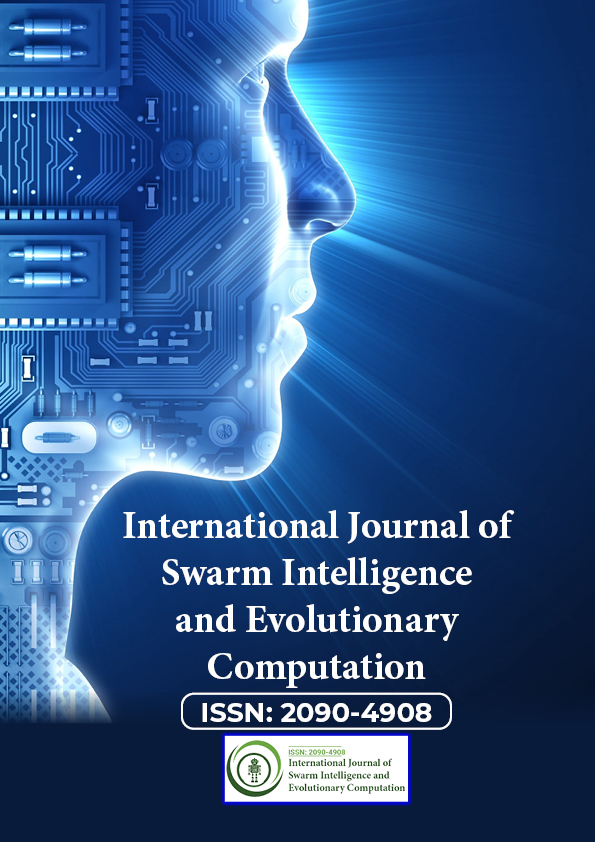Indexed In
- Genamics JournalSeek
- RefSeek
- Hamdard University
- EBSCO A-Z
- OCLC- WorldCat
- Publons
- Euro Pub
- Google Scholar
Useful Links
Share This Page
Journal Flyer

Open Access Journals
- Agri and Aquaculture
- Biochemistry
- Bioinformatics & Systems Biology
- Business & Management
- Chemistry
- Clinical Sciences
- Engineering
- Food & Nutrition
- General Science
- Genetics & Molecular Biology
- Immunology & Microbiology
- Medical Sciences
- Neuroscience & Psychology
- Nursing & Health Care
- Pharmaceutical Sciences
Perspective - (2023) Volume 12, Issue 2
Revolutionizing Robotics: Emerging Field of Neurorobotic Technology
Dannie Wilkins*Received: 22-Feb-2023, Manuscript No. SIEC-23-20960; Editor assigned: 24-Feb-2023, Pre QC No. SIEC-23-20960 (PQ); Reviewed: 10-Mar-2023, QC No. SIEC-23-20960; Revised: 17-Mar-2023, Manuscript No. SIEC-23-20960 (R); Published: 27-Mar-2023, DOI: 10.35248/2090-4908.23.12.310
Description
Neurorobotic technology is an emerging field that combines principles from neuroscience and robotics to provide advanced systems capable of mimicking human brain function and behavior. With the increasing understanding of how the brain works and the rapid advancements in robotics, neurorobotic technology has the potential to revolutionize various fields, ranging from healthcare and rehabilitation to education and entertainment.
The human brain is a marvel of nature, capable of processing vast amounts of information, making complex decisions, and controlling the body's movements. For decades, scientists and engineers have been trying to replicate the remarkable capabilities of the human brain in machines. Neurorobotic technology, also known as neuro-robotics or brain-robot interfaces, is a multidisciplinary field that brings together expertise from neuroscience, robotics, computer science, and other disciplines to develop robotic systems that can interact with the brain and perform tasks that mimic human cognition and behavior. Early experiments involved using electrical signals from the brain to control simple robotic devices. However, due to the limited understanding of brain function and the limited capabilities of robotic technology at that time, progress was slow. Over the years, advancements in neuroscience and robotics have paved the way for significant breakthroughs in neurorobotic technology and it has made significant strides in several areas, with notable achievements in healthcare, rehabilitation, and assistive technologies. One of the most well-known applications of neurorobotic technology is in the field of prosthetics. Advanced prosthetic limbs equipped with sensors and actuators can now be controlled directly by the user's brain signals, allowing amputees to regain natural movement and dexterity. These brain-controlled prosthetics have drastically improved the quality of life for amputees, enabling them to perform daily tasks with greater ease and independence.
Neurorobotic technology has also found applications in rehabilitation, particularly in stroke recovery. Robotic exoskeletons and other devices can assist stroke patients in regaining motor functions by providing targeted therapy and feedback. These devices work by interfacing with the patient's brain signals, allowing for precise and personalized rehabilitation programs. Furthermore, neurorobotic technology has shown potential in aiding individuals with spinal cord injuries, Parkinson's disease, and other neurological conditions.
In addition to healthcare and rehabilitation, neurorobotic technology has also found applications in education and entertainment. Brain Computer Interfaces (BCIs) have been used to develop educational tools that enhance learning and cognitive training. For example, BCIs can be used to Produce virtual environments where users can control objects or interact with the environment using their brain signals, providing a unique and immersive learning experience. Similarly, in the field of entertainment, neurorobotic technology has been used to develop brain-controlled games and virtual reality experiences, opening up new possibilities for interactive and immersive entertainment experiences.
Despite the significant advancements in neurorobotic technology, there are still several challenges and limitations that need to be addressed. One of the primary challenges is the complexity of the brain. The human brain is an intricate and dynamic organ with billions of neurons and complex neural networks. Our understanding of how the brain works is still limited, and replicating its full capabilities in a robotic system remains a daunting task. Decoding the vast amount of information encoded in brain signals.
Citation: Wilkins D (2023) Revolutionizing Robotics: Emerging Field of Neurorobotic Technology. Int J Swarm Evol Comput. 12:310.
Copyright: © 2023 Wilkins D. This is an open-access article distributed under the terms of the Creative Commons Attribution License, which permits unrestricted use, distribution, and reproduction in any medium, provided the original author and source are credited.


